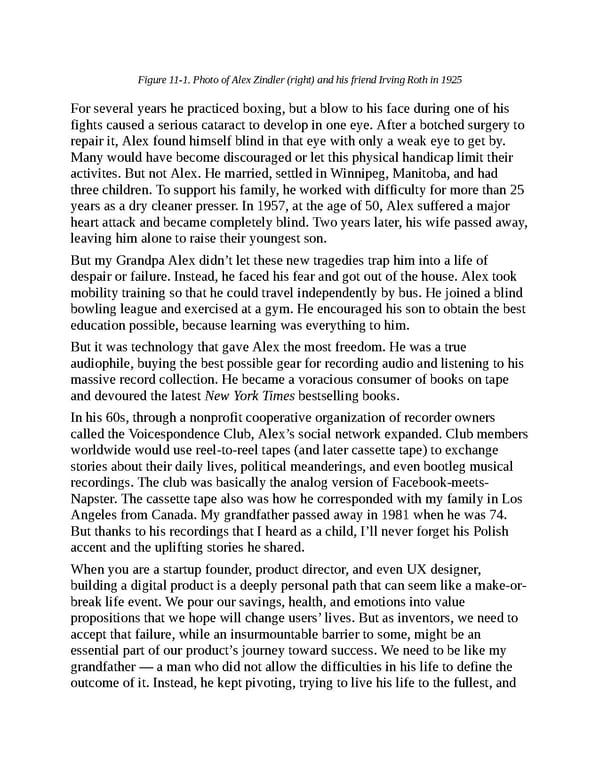Figure 11-1. Photo of Alex Zindler (right) and his friend Irving Roth in 1925 For several years he practiced boxing, but a blow to his face during one of his fights caused a serious cataract to develop in one eye. After a botched surgery to repair it, Alex found himself blind in that eye with only a weak eye to get by. Many would have become discouraged or let this physical handicap limit their activites. But not Alex. He married, settled in Winnipeg, Manitoba, and had three children. To support his family, he worked with difficulty for more than 25 years as a dry cleaner presser. In 1957, at the age of 50, Alex suffered a major heart attack and became completely blind. Two years later, his wife passed away, leaving him alone to raise their youngest son. But my Grandpa Alex didn’t let these new tragedies trap him into a life of despair or failure. Instead, he faced his fear and got out of the house. Alex took mobility training so that he could travel independently by bus. He joined a blind bowling league and exercised at a gym. He encouraged his son to obtain the best education possible, because learning was everything to him. But it was technology that gave Alex the most freedom. He was a true audiophile, buying the best possible gear for recording audio and listening to his massive record collection. He became a voracious consumer of books on tape and devoured the latest New York Times bestselling books. In his 60s, through a nonprofit cooperative organization of recorder owners called the Voicespondence Club, Alex’s social network expanded. Club members worldwide would use reel-to-reel tapes (and later cassette tape) to exchange stories about their daily lives, political meanderings, and even bootleg musical recordings. The club was basically the analog version of Facebook-meets- Napster. The cassette tape also was how he corresponded with my family in Los Angeles from Canada. My grandfather passed away in 1981 when he was 74. But thanks to his recordings that I heard as a child, I’ll never forget his Polish accent and the uplifting stories he shared. When you are a startup founder, product director, and even UX designer, building a digital product is a deeply personal path that can seem like a make-or- break life event. We pour our savings, health, and emotions into value propositions that we hope will change users’ lives. But as inventors, we need to accept that failure, while an insurmountable barrier to some, might be an essential part of our product’s journey toward success. We need to be like my grandfather — a man who did not allow the difficulties in his life to define the outcome of it. Instead, he kept pivoting, trying to live his life to the fullest, and
 UX Strategy: How to Devise Innovative Digital Products that People Want Page 324 Page 326
UX Strategy: How to Devise Innovative Digital Products that People Want Page 324 Page 326